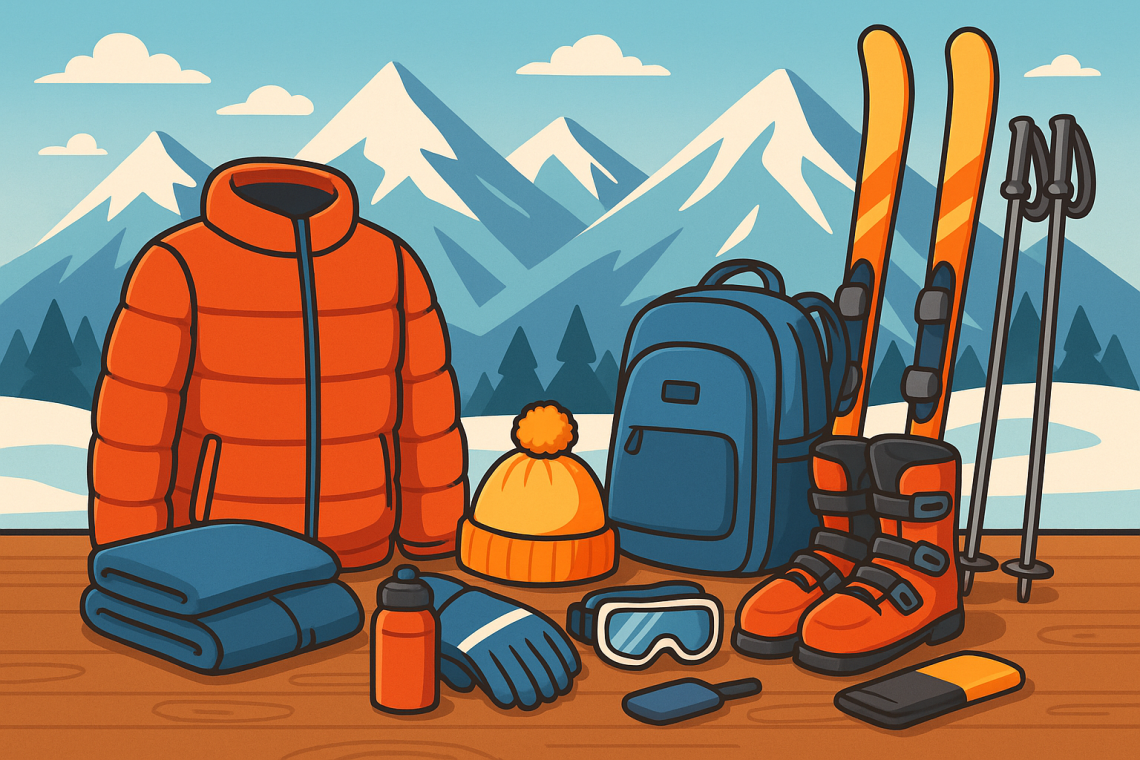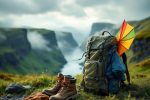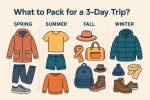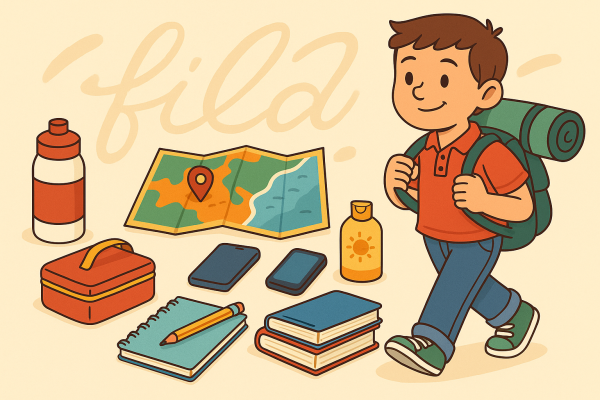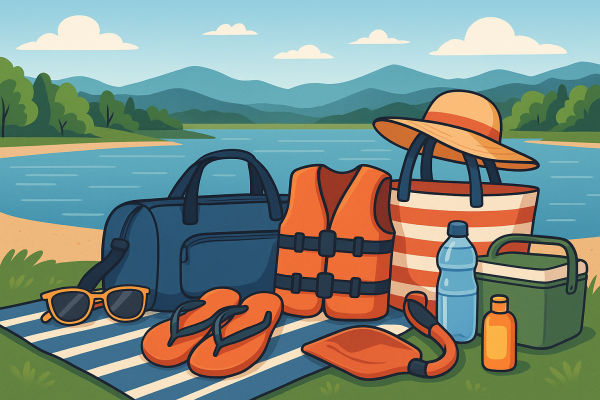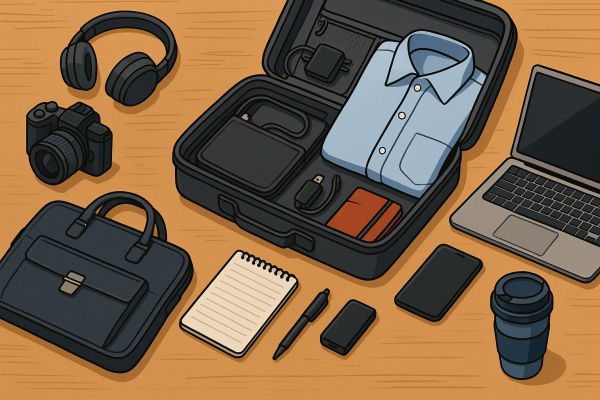What to Pack for a Ski Trip? A Guide to Staying Warm and Prepared
Planning an unforgettable ski trip? Don’t let packing woes slow you down! Discover crucial gear like waterproof jackets, insulated pants, and moisture-wicking base layers for optimal warmth and comfort on the slopes. Learn about essential safety equipment, including helmets and goggles, and how proper layering can prevent overheating and chills. Plus, get helpful tips for staying hydrated at high altitudes. Prepare for a safe and enjoyable ski adventure – read on to pack like a pro!
Important information
- Essential clothing includes a waterproof, insulated ski jacket and pants, moisture-wicking base layers, fleece or sweaters, warm gloves or mittens, a beanie, and UV-protective ski goggles.
- Safety gear like a ski helmet is crucial. Pack a first-aid kit, sunscreen, and any personal medications.
- Après-ski essentials include comfortable winter clothes, sturdy snow boots, and extra outfits for other activities.
- Proper ski equipment (skis, boots, and poles) is necessary, and ensuring a snug boot fit is vital for comfort and control.
- Staying hydrated at high altitudes is critical. Drink plenty of water and avoid dehydrating beverages like alcohol and caffeine.
What to Pack for a Ski Trip: Essentials for Comfort and Safety
Gearing Up for the Slopes
Prioritize comfort and safety with these essential items for a smooth ski experience:
- Waterproof, insulated ski jacket and pants, for optimal protection from the elements.
- Moisture-wicking base layers (thermal underwear), to keep you warm and dry.
- Fleece or sweaters, for added insulation.
- Warm gloves or mittens, a beanie or helmet liner, and UV-protective ski goggles, to shield you from the cold and sun.
- Ski helmet, a non-negotiable safety essential.
Après-Ski and Other Essentials
Ensure comfort and preparedness off the slopes as well:
- Comfortable winter clothes and sturdy snow boots, for navigating snowy terrain.
- Sunscreen, lip balm, and a first-aid kit, for general well-being.
- Personal medications, if required.
- Inspect your ski equipment thoroughly before your trip to ensure it’s slope-ready. If renting, consider doing so upon arrival at your destination.
Comprehensive Packing List
On the Slopes
- Waterproof, insulated ski pants and jacket, or a cozy jumpsuit for optimal protection from the elements.
- Base layers, fleece or sweaters, and ski socks for essential warmth and layering.
- Balaclava, gloves or mittens, goggles, and a helmet for safety and comfort on the slopes.
Après-Ski and Beyond
- Comfortable pants or jeans, sweaters, and warm boots for relaxing after a day on the slopes.
- Outfits suitable for exploring town and swimwear for the hot tub.
- Comfortable clothes for lounging and sleeping.
Clothing Essentials for a Ski Trip
For a comfortable ski trip, pack a waterproof, insulated ski jacket and pants to stay warm and dry. Thermal base layers are crucial for maintaining core warmth.
Add mid-layers like fleece or sweaters for extra warmth. Don’t forget warm ski socks, insulated gloves or mittens, a winter hat, and a neck gaiter or ski mask for complete protection.
Proper Clothing for a Ski Vacation
Preparing for a ski trip is crucial for both safety and enjoyment. Follow these steps to ensure you’re well-equipped:
Start with a waterproof, insulated jacket and pants to protect yourself from the cold and wet conditions.
Wear thermal base layers to wick away perspiration, keeping you dry and comfortable.
Add a fleece or down mid-layer for extra warmth.
Don’t forget essential accessories: warm gloves or mittens, a hat, and ski goggles to protect your eyes.
With these items packed, you’re ready for a safe and pleasant time on the slopes.
Moisture-Wicking Base Layers
For a comfortable day on the slopes, moisture-wicking base layers are essential. These garments wick away sweat, keeping you dry and warm even during strenuous activity.
Popular choices include merino wool and synthetic fabrics, both known for their breathability and moisture-moving properties. A snug fit is crucial for optimal performance, helping regulate body temperature and preventing both overheating and chills. A good base layer can significantly enhance your skiing experience.
Benefits of Moisture-Wicking Base Layers
- Keeps you dry by wicking away sweat.
- Maintains warmth even during strenuous activity.
- Regulates body temperature, preventing overheating and chills.
- Enhances overall skiing experience.
Popular Fabric Choices
- Merino wool: known for breathability and moisture-wicking.
- Synthetic fabrics: offer excellent moisture-moving properties.
Warm Clothing Layers
Layering warm clothing effectively traps heat and wicks away moisture. For instance, a fleece jacket or down vest provides essential insulation. Worn under a waterproof shell, these layers keep you warm and dry.
Insulated Jackets and Pants
Stay warm and dry on the slopes with insulated jackets and pants, your first line of defense against harsh winter conditions. Choose waterproof and breathable materials to ensure comfort even during strenuous activity.
Pit zips offer essential ventilation during high-energy runs, preventing overheating. A snow skirt is a must-have when the powder gets deep, keeping snow out and warmth in. Together, these features make your time on the mountain more enjoyable.
Outer Clothing Layers
Staying warm and dry on the slopes is crucial for a comfortable skiing experience. A waterproof, windproof outer layer, like a ski jacket and pants, is your primary defense against snow, wind, and rain. These garments are typically constructed from durable materials such as Gore-Tex or nylon, offering excellent protection from the elements. Choose the right gear to maximize your mountain enjoyment.
Accessories: Gloves, Beanies, and Goggles
Essential ski accessories like gloves, beanies, and goggles are crucial for a comfortable and safe experience. Gloves provide warmth for your hands, while beanies insulate your head from the cold. Goggles shield your eyes from harsh glare and blowing snow. Packing extras is highly recommended, as lost or damaged gear can quickly derail a ski trip. For added protection against the elements, consider a neck gaiter or scarf.
Gloves: provide essential warmth and protection for your hands.
Beanies: insulate your head, keeping you warm and comfortable.
Goggles: shield your eyes from glare, wind, and snow, ensuring clear vision.
Extra gloves, beanies, goggles: having backups can save your trip if your primary gear gets lost or damaged.
Neck gaiter or scarf: offer additional protection for your face and neck from the cold and wind.
Essential Gear and Accessories
Skis, boots, poles, and a helmet are the essential equipment for skiing. Well-fitted boots are crucial for comfort and control, ensuring they are snug but not too tight.
Poles provide balance and aid in navigating the terrain. A helmet is the most important piece of safety equipment, protecting your head from impacts.
Goggles are vital for protecting your eyes from the sun and snow, ensuring clear vision on the slopes. A neck gaiter or scarf offers additional warmth on chilly days.
High-SPF sunscreen is essential at higher altitudes to protect against increased sunburn risk. Pack a first-aid kit containing pain relievers, bandages, and blister treatment.
A backpack is useful for carrying water, snacks, and extra layers of clothing. Consider using a ski bag and boot bag to protect your gear during travel.
Specific Gear for Skiing
Ski goggles enhance visibility and shield your eyes from glare, wind, and snow, essential for any skier.
A neck gaiter or scarf offers crucial warmth and protects your face from the cold.
High-SPF sunscreen is vital to prevent sunburn at high altitudes.
For travel, a ski bag protects your skis, while a boot bag safeguards your boots and other equipment.
Ski Equipment: Skis, Boots, and Poles
Preparing for a ski trip requires having the right equipment, including skis, boots, and poles. A snug fit is essential for ski boots to ensure both comfort and control on the slopes.
Choosing the correct ski length is crucial for optimal performance, depending on both your height and skill level. Using ski poles can greatly enhance your balance and rhythm, contributing to a smoother skiing experience.
Safety Equipment: Helmets and Protective Gear
Protecting your head is paramount, so a helmet is an absolute essential. It’s your primary defense against impacts.
Goggles are equally crucial, shielding your eyes from the elements like harsh glare, wind, and snow.
For enhanced safety, wrist guards, knee pads, and back protectors can significantly lessen the risk of injury. A first-aid kit is indispensable for handling minor mishaps.
First Aid Kit and Personal Items
Pack a well-stocked first-aid kit with bandages, antiseptic wipes, pain relievers, blister treatment, and any personal medications. Remember essential items like ski passes, identification, credit cards, and insurance information. Don’t forget hand sanitizer and chargers. For added comfort, bring headphones, guidebooks, extra batteries, and a travel pillow.
Preparation for Cold Weather and Altitude
For fluctuating mountain temperatures, layering your clothing is essential, allowing you to adapt to changing conditions. High altitudes also increase the risk of dehydration, so drink plenty of water throughout the day to stay properly hydrated.
Because hydration is crucial at higher elevations, drink water even if you don’t feel thirsty. Also, avoid alcohol and caffeine, as these beverages can exacerbate dehydration. Water is the best choice for optimal hydration.
Layering for Thermoregulation
Dressing in layers is key to staying comfortable in changing weather and activity levels. Start with a moisture-wicking base layer to draw sweat away from your skin. Add an insulating mid-layer, such as fleece or down, to trap warm air. Finally, a waterproof and windproof outer shell protects you from the elements.
Hydration Tips for High Altitudes
Stay hydrated for a successful ski day. Drink plenty of water before, during, and after skiing, as high altitudes dehydrate you faster. Hydrating foods like fruits and vegetables are also helpful. Warm drinks like herbal tea or hot chocolate provide hydration and warmth. Carry a reusable water bottle to refill throughout the day.

